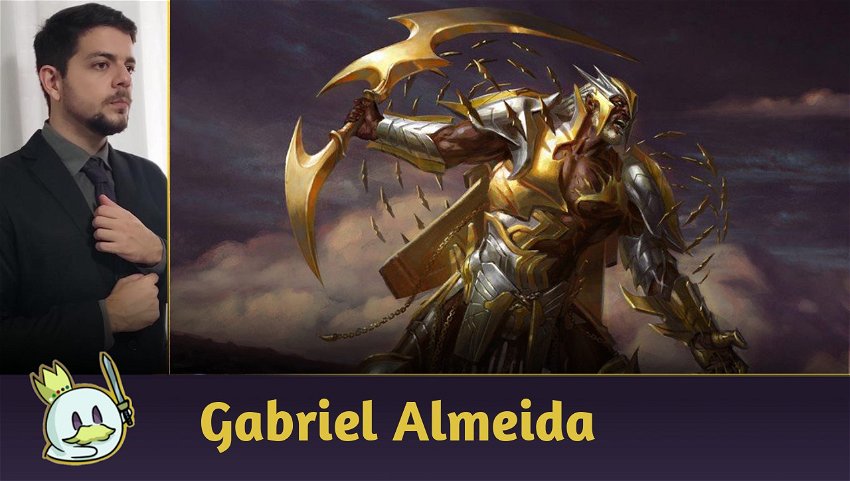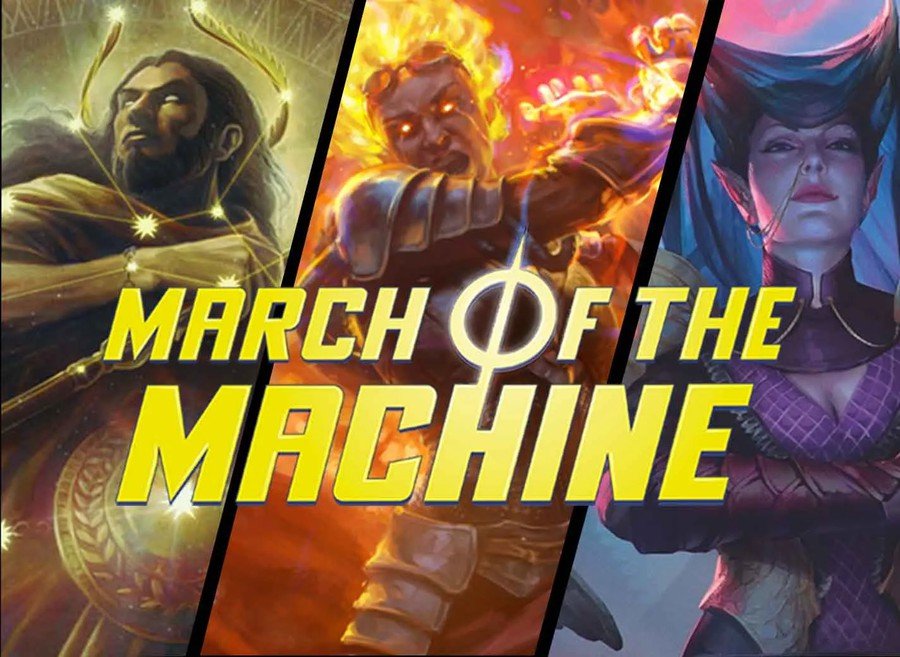What is Double Strike?
According to the game's rulebook, Double Strike is a static ability that modifies the rules of the combat phase. If a creature participating in combat has the ability Double Strike or First Strike, two steps of combat damage will occur, one for creatures with the aforementioned abilities and the “normal” step.
The creature with Double Strike deals combat damage for both steps. If a creature with First Strike gets Double Strike during the first step, it deals damage in the second. If a creature loses its ability during the first step, it won't deal damage in the second.

Double Strike does not stack. If a Fabled Hero is equipped with Embercleave, there will still only be one “extra step”.
First Strike and Double Strike are different abilities, if any card specifically removes First Strike, creatures with Double Strike will not be affected and vice versa.
If a creature with Double Strike destroys the blocking creature the first time it deals damage, it doesn't deal damage a second time, except for:
Double Strike + Trample
Double Strike, despite making creatures significantly stronger and increasing their tendency to survive combat, it still isn't very effective in dealing damage to the player, not alone, at least.
As mentioned earlier, the creature with Double Strike doesn't deal combat damage a second time if it destroys the blocking creature. Therefore, it is not very useful to leave the creature with a lot of power, only for the opponent to play any expendable creature as a blocker.
The most effective way to resolve this is to assign Trample to the creature along with Double Strike. See, if your Enduring Angel is equipped with a Ceremonial Groundbreaker, when you destroy the blocking creature on the first hit, it will deal full damage on the second, as the defending creature is out of combat.
If the angel, already equipped, was blocked by an Ao, the Dawn Sky, it would deal 1 damage to the player and destroy the dragon, then deal an additional 5 damage to the defending player.

Double Strike + Lifelink
Double Strike with Lifelink turns out not to be one of the most interesting interactions, but as it is a relatively frequent question, I think it's important to mention.
When a creature with both abilities attacks, it will only cause the controller to gain life twice in three situations: if it isn't blocked, if it doesn't kill the blocking creature on the first hit, or if it has Trample.
This happens due to the explanation given in the previous topic: without Trample, when killing the creature in the first hit, it doesn't deal damage again, not causing Lifelink's ability to trigger again.
However, generally, you want to grant evasion to your creature with Double Strike (or Trample), so it might be a good choice.
Double Strike + Deathtouch
Here the interaction isn't so hard, but as it is very efficient, let's talk about it. The Deathtouch ability allows any amount of damage to be enough to destroy a creature.
Since the creature with Double Strike deals damage before it takes damage, it simply destroys the blocking creature, taking no combat damage and regardless of the blocker's toughness.

Example: You used Bladebrand on a Fury you control. The opponent blocked with Jegantha, the Wellspring. As your creature has Double Strike and Deathtouch, it destroys Jegantha in the first damage step.
If by some chance Fury also had Trample, it would deal 5 damage to the defending player. Two from the first strike (1 damage to kill the creature and the other 2 pass) and 3 from the second strike.
Where to use creatures with Double Strike
Creatures with Double Strike usually come with lower power and toughness than normal, to try and make them fairer. For example, the Fabled Hero: is a converted mana cost 3 card, but only with 2/2 power/toughness. Which is under the curve, considering it's a rare.
This happens to try to make the creature balanced and make the player strive to take full advantage of the card.
In Commander, there is an archetype called “Voltron” that is based on defeating the opponent by dealing combat damage only with the commander. In this archetype, it is very common to use legendaries that already have Double Strike, such as Rafiq of the Many or cards that give the ability to the creature, such as Lizard Blades or Fireshrieker.
In 60-card formats, back in the Theros-Khans of Tarkir Standard, we had the famous UW Heroic, which used Fabled Hero and auras like Aqueous Form and Stratus Walk to grant evasion.

In addition to evasion cards, it is very common to use cards to protect the creature with Double Strike. This happens because, as a rule, plenty of resources are dedicated to making the creature with Double Strike stronger, and as a consequence, a removal can end the game.
Therefore, cards like Gods Willing or Hyena Umbra turn out to be very useful.
Of course, some creatures already have built-in protection. One of the most popular cards with Double Strike is the Mirran Crusader which has protection against black, already managing to escape the most commonly used color for removals.
How to play against Double Strike
Well, as mentioned earlier, decks that use creatures with Double Strike tend to dedicate countless resources to making them strong, and targeted removals usually end the opponent's plan.
See, for the strategy to work, the opponent must spend a certain amount of mana and turns using equipment, auras and instants that increase the creature's power or give it evasion. So if you spend 3 mana and a turn to use a Murder on the creature that the opponent spent 3 turns making stronger, you are ahead in “Tempo” and resources.
Sweepers tend to be quite efficient as well, as less efficient as it may seem at first glance, as it will usually only eliminate one creature. But along with the creature, the auras go away, and the opponent will have to spend mana to equip the equipment again on a next creature.
In addition, counterspells also make the job easier. It is common for these decks not to have many creatures, so countering one of them can make the player go a few turns without casting a second creature and since the other cards are useless without one, they spend turns not advancing their game.
That said, there are creatures like Mirran Crusader that are good independent of being buffed and will show up in Weenies/Aggressive decks and not in more dedicated strategies. In these situations, just treat them like one more creature in the aggro deck.
Famous Cards with Double Strike
During the game's history, some cards with Double Strike (or that grant the ability) were quite successful, both in casual formats and in more competitive formats.

Mirran Crusader was a very popular card, even in Legacy, being an excellent target to use Sword of Fire and Ice in the Death and Taxes deck. Protection against black and green allowing it to escape Abrupt Decay and Fatal Push and the ability to trigger sword effects twice made it a very threatening card. However, the eventual power creep of the format and the emergence of several more efficient white 3 drops made it lose space in the format.
Embercleave already did a lot of work on Pioneer and Standard at the time. Mono Red and Gruul Aggro used the card as a very efficient finisher. As the equipment gives Trample, in addition to Double Strike, it was too complicated for the opponent to deal with.
Temur Battle Rage was a very popular card in Pauper, especially when Atog was legal, and was also present in Death's Shadow decks in Modern.
Bruse Tarl, Boorish Herder and True Conviction are well-known cards among Commander players and combat phase worshipers. Lifelink and Double Strike turn out to be very useful in more casual levels of the format.
Conclusion
I hope you enjoyed this article talking about Double Strike. One of my first competitive decks was UW Auras with Fabled Hero, so I have a great appreciation for this play style, even though today it is not as popular in more competitive scenarios.
Any questions, just leave them in the comments.














— تعليقات 0
, ردود الفعل 1
كن أول من يعلق